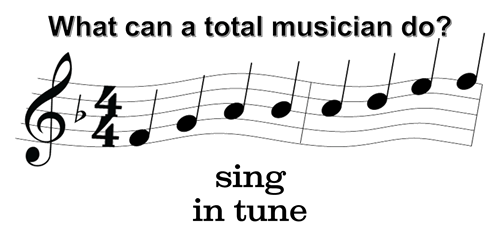|
Here you can find all the information for the classes each week!
|
♫ Listen to your class music without a screen! ♫
Tuesday, February 4, 2025 | Uncategorized
 If you are looking for a way to make it easier to play your class music, keep reading! I recently discovered this screen-free way to give your child control of their music listening experience. It's called a Yoto player. I opted for the Yoto Mini and I feel like it is more than adequate for the job. I made a couple web pages that go into more detail about how you can use it for Let's Play Music and Sound Beginnings. There's even a way to get a 10% discount on your first purchase! Read all about it here! If you are looking for a way to make it easier to play your class music, keep reading! I recently discovered this screen-free way to give your child control of their music listening experience. It's called a Yoto player. I opted for the Yoto Mini and I feel like it is more than adequate for the job. I made a couple web pages that go into more detail about how you can use it for Let's Play Music and Sound Beginnings. There's even a way to get a 10% discount on your first purchase! Read all about it here!
|
Sand and Sea #8
Friday, July 25, 2025 | Sand and Sea Lessons
|
Sand and Sea #7
Friday, July 18, 2025 | Sand and Sea Lessons
|
Sand and Sea #6
Friday, July 11, 2025 | Sand and Sea Lessons
|
Sand and Sea #5
Friday, July 4, 2025 | Sand and Sea Lessons
|
Sand and Sea #4
Friday, June 27, 2025 | Sand and Sea Lessons
|
Lesson #4
Your kids are "A" adorable and I love each of them! One of the most important things I learned from Sound Beginnings was how to play with my own kids! Eye contact, physical touch (holding hands, hugs, patting, etc.), and telling your child you love playing with them shows them how much you love them!
Attaching a physical action to the alphabet letters (like in our song A, You're Adorable) improves fine motor skills. It also forces the brain to multi-task, and processing this extra information increases its ability to recall letter names and sounds!
I would like to know who is reading this newsletter. Please text to let me know what song your child has requested to be played again most often!
Next class we'll sing these songs:
Learning about different types of instruments is not only fun, but it helps the kids be aware of many different types of sounds. Their ears will be able to pick out and identify sounds and rhythms – even when they are all together! Your child may even have a favorite instrument sound! Or maybe they will enjoy playing a certain kind of instrument. We experiment with many types of simple percussion instruments in many different ways to not only practice coordination with our hands, but introduce many types of sounds that can be made with the same instrument!
The interval between the pitches of SOL and MI occurs naturally in singing and calling. This makes it a perfect place to start when learning to sing in tune! A terrific example of this is our song Bickle Bockle.
Optional home fun activity: Match up the numbers and animals on page 13 of your workbook and play simple counting games. (Remember, these activities are optional but can be a great bonding experience to do with your child during the week.)
|
Sand and Sea #3
Friday, June 20, 2025 | Sand and Sea Lessons
|
Lesson #3
It is so fun playing with you and your child(ren) in class! It usually takes the kids (and sometimes you) a few lessons to get the feel for class and relax and fully participate. The more you listen to the music at home and familiarize your children with it, the more they will enjoy class and grow in their musical skills!
If you have any problems accessing the music, please let me know! Use the lyrics printed in the front of the book if you’d like extra guidance on words.
Please reply and let me know one thing you and your child(ren) have done with your scarf that you've enjoyed at home! Next class we'll sing these songs:
We are practicing more than just music in our Sand and Sea class! Preschool skills such as taking turns, name recognition, following instructions, and taking care of our supplies are all skills we used today! We also used a lot of vocal play and echoing today (listening skills), along with keeping the beat (did you feel the subdivision we are doing? This uses the math side of our brain and prepares it for future learning!), and imagining the waves with our blue scarves and ocean life (strengthens our creativity and problem solving skills)!
Helping children identify their feelings (like in Over the Deep Blue Sea) promotes healthy emotional development. When they learn to label emotions in themselves and others, they are better able to respond to strong emotions in healthy ways.
Smart Moves dances (like our Sea Diver's Dance) allow children to use their whole body to interact with the musical elements in a classical piece of music.
Optional home fun activity: Color the "Sea Diver's Dance" on page 15 of your workbook. You can hold a paper on each side of the bell if you'd like to help them to color in the lines. (Remember, these activities are optional but can be a great bonding experience to do with your child during the week.) Watch this amazing family perform “Aquarium” by Camille Saint-Saens. Or watch this educational video with real sea creatures while you color! Wasn’t it fun to try out some Hawaiian dancing with our hands and tell your child how much you love them this way? Watch this clip to play at home! (Our version is a bit simpler!) |
Sand and Sea #2
Friday, June 13, 2025 | Sand and Sea Lessons
|
Sand and Sea #1
Friday, June 6, 2025 | Sand and Sea Lessons
|
Lesson #1
What a great first day of Sand and Sea! I hope you and your child had as much fun in class as I did! Here are a few reminders that will help you get the most out of our time together in class:
Tuition is due today and is $90 if you have one child and $110 if you have more than one. You can pay via Zelle using my phone number (preferred because I don't have to pay fees), or pay via Venmo @musikandme.
Our 7 foundational elements are proven to aid in a child’s development. We will incorporate most, if not all, in each of our Sound Beginnings classes! I encourage you to read through the "Parent Page" in your book more thoroughly at home.
What songs should you listen to at home? I'll let you know here in case you want to be ready with the ones we'll use next class. The more familiar you and your child are with the songs, the more fun you will have in class! Next class we'll sing these songs:
Besides musical skills, Sound Beginnings also introduces children to kindergarten concepts such as name recognition, letters and numbers, and literacy skills. Among other concepts, the Sand and Sea semester will specifically focus on letters/sounds, sea animals, counting, and feelings.
We will use tone bells in class to introduce children to important musical concepts. Using them with solfege syllables and hand signs will help to build an understanding of pitch relationships.
Optional home fun activity: Do the Name Recognition activity on page 3 of your workbook. (Remember, these activities are optional but can be a great bonding experience to do with your child during the week.)
Now that you know more about what to expect in class, here is a video that will help you to know what Sound Beginnings is all about and how it will benefit your child. This was created by another teacher and she was generous enough to share it! (Where it talks about Instrument Day on lesson #15, we will be doing it on lesson #8 for this shorter session!) https://www.youtube.com/watch?app=desktop&v=qgaNL1HOMOI
Here is a video that will give you ideas for how to participate during class. This was created by another teacher who was generous enough to share it! https://youtu.be/IxZrTdk0pVk
Here are some quick videos for specific ways you can participate with your BABY in class! Baby - positions: https://youtu.be/8nyS_nQlpE0 Baby - tapping: https://youtu.be/BLTrFKg-qRs Baby - moving: https://youtu.be/F0_ME4fGTrU Baby - instruments: https://youtu.be/HjThTkKdmQo
|
Green Turtle Shells #15
Wednesday, May 14, 2025 | Green Turtle Shells Lessons
|
Lesson #15
Thank you so much for attending Station Day! I hope you realize just how much your child has learned this semester. I also hope you were able to see some things that can be worked on over Christmas break. I hope the kids enjoy and use the Christmas songbook they received!
As the name has implied, this semester has been a little slow (like a turtle) purposely to help the children be able to really build a good foundation that will be so important in the next semesters. Yellow Arrows will feel like we are flying through new material (pun intended!), but since we have built a strong foundation, it will be a lot of fun!
Let's Play Music requires all teachers to have their families complete surveys at the end of each semester. If you didn't fill it out on Station Day, please fill it out now! Here's the link: Green Turtle Shells Parent Evaluation
A little bit of relaxed daily practice over the break will keep the skills taught over the semester fresh and honed. By Yellow Arrows they should be able to recognize and play all chords in RH with fairly quick and smooth transitions.
The Christmas Break Challenge is completely optional, but I hope you will help your child keep their skills up over the break! (I put it on the download portal, in case you happen to misplace it!)
Classes begin the first full week of January, same day/time. Lesson #1 of Yellow Arrows is also a Parent Day! Please look carefully at your class calendar in the student portal. (If you still can't access that, please let me know!) I might have a few random weeks I'm taking off, so please be aware of that when importing your calendar to your phones!
Please begin listening to the Yellow Arrows soundtrack! We have a lot of fun songs coming up!
Celebrate Connection
Holiday Ensemble
Fun ways to incorporate the entire family with a Holiday Sing & Play-a-Long!
Be sure to go through the Christmas Break Worksheet! (It's in the Student Download Portal if you lose your printed copy!) Try to do 1-2 activities each day. I've added a fun version of Deck the Halls piano music to your student's download portal to add variety to daily practice and spread Holiday Cheer!
|
Green Turtle Shells #14
Thursday, May 1, 2025 | Green Turtle Shells Lessons
|
Lesson #14
Next week is STATION DAY WITH PARENTS! This is a wonderful opportunity for your children to show you just how much they have learned during our Green Turtle Shells semester! This is the highlight of the semester, so PLEASE be sure to come enjoy it with them!
Here's how it will work: I will have 10 different stations that you and your child rotate through. You can plan to spend about 3-5 minutes at each station and can go in any order. You will be given a checklist to help you go to all the stations. One of the stations is a personal chat with me, and your child will have the opportunity to play their favorite song on my nice piano! I will give out prizes, presents, and a Christmas Break Challenge worksheet (totally optional) that will help your child not get rusty over the break!
Moms, bring your phones and kids wear your LPM shirts! (One of our stations is a "photo booth"!)
Celebrate Connection
Chord Transitions
With the holidays approaching here is a Gift Buying Guide for your budding musician! Consider a gift for your child that will help them in their musical learning. Work on sight reading on the tone bells with the 8 note songbook and 8 note songbook - Christmas edition. Make up your own music using the 8 note PlayPipes. Or reward your musician with a cute sticker from the 2nd Year Sticker Pack. |
Green Turtle Shells #13
Thursday, May 1, 2025 | Green Turtle Shells Lessons
|
Lesson #13
Thank you, parents, for coming to class this week! You are an integral part of your child's music education!
Just so you know, Station Day is coming up on Lesson 15. That is also a parent day! A circuit of musical stations will be set up for the kids to rotate through. Each station will review the skills and concepts taught in class. One of the stations will be an 'interview' with me to show you how much your student has accomplished this fall!
Concepts:
Celebrate Connection
Blue Sky
REMINDER: It is crucial that your child is using correct finger numbers on the chords. The numbers next to the chords in the book are the ones to use WITHOUT EXCEPTION!
Bubble Hands
Bonus Songs
Brown Jug
Harmony Happenings
|
Green Turtle Shells #12
Thursday, May 1, 2025 | Green Turtle Shells Lessons
|
Lesson #12
Next week parents attend and tuition is due for those making monthly payments! (Last one this semester!)
We have been working hard on the transition between the red and blue chords. Please help your child practice if they are struggling with that at all! Our goal is to be able to play these chords without needing to think about it at all (eventually doing it with eyes closed). Don't forget, we use the same fingers for red and blue chords (1-3-5), and our thumb is the anchor so it doesn't move at all!
Celebrate Connection
Mystery Bug
Brown Jug
With Thanksgiving just behind us, we can find and play the Red, Blue and Yellow chords in 5 Fat Turkeys from last year! |
Green Turtle Shells #11
Thursday, May 1, 2025 | Green Turtle Shells Lessons
|
Lesson #11
We learned the Blue Chord this week. Please place the Blue Chord Stickers on your keyboard or piano on the notes C-F-A.
In class we colored the chords in Primary Chord Song and Blue Sky to help distinguish the notation of each chord. (Please help them finish coloring them at home if they didn't finish in class. The notes don't need to be filled in perfectly, just the right colors so they can be identified quickly.) Please be sure to have your child practice playing these songs to get confident in the chord changes. We want them to be able to do it with their eyes closed in a few weeks!
Celebrate Connection
Turtle Shells
Now that we are more comfortable with keyboard geography, hand position, how to build chords notated and on the piano, we are ready to keep our eyes on the book and not look down at our fingers while we play each of the songs in the songbook! We’ve already introduced Laser Beam Eyes. Here are some other fun ways to keep our eyes on the book while we practice! Don’t forget, parents, to follow the notes with your finger and sing along with your child!
|
Green Turtle Shells #10
Wednesday, April 30, 2025 | Green Turtle Shells Lessons
|
Lesson #10
The students are mastering the fingering placement for the yellow chord and gaining confidence as they continue to have successful experiences in class as well as at home.
Red-Yellow Chord Transitions
BEEF, it’s what’s for dinner! Our new puppet show comes from a ballet named Rodeo written by Aaron Copland. Enjoy learning more about the composer and watching some excellent choreography while listening to the 4th movement of this ballet, Hoedown. Yee Haw!
And because we're playing "Row, Row, Row Your Boat" now, here's a couple fun videos of just how fun it can be to CHANGE a few things about it! https://www.youtube.com/watch?v=wY9O4M8DS7c https://www.youtube.com/watch?v=fsESxOwASuw |

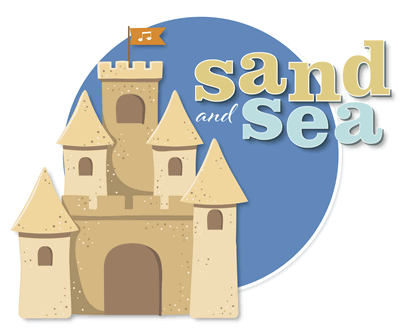

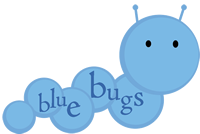
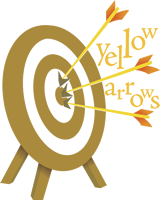
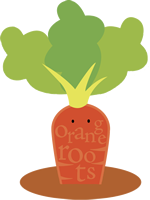
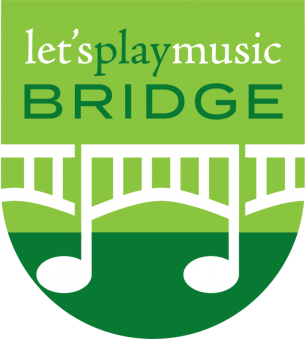



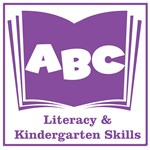
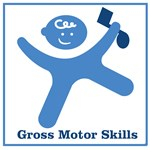
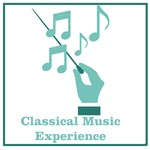
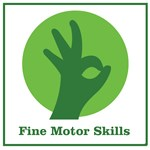
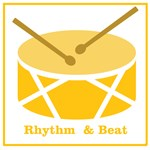

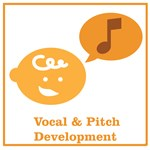



 It is VERY important that your child is using fingers 1-3-5 to play the
It is VERY important that your child is using fingers 1-3-5 to play the 

